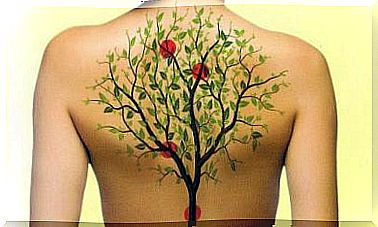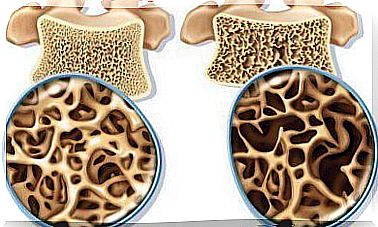Different Forms Of Chemotherapy And Their Properties

Chemotherapy, as you probably already know, is one of the most widely used methods of treating various cancers. It encompasses a wide range of different drugs, which in turn has led to a wide variety of different forms of chemotherapy in medicine today.
The goal of this type of treatment is to destroy the cancer cells to reduce the spread of the disease as well as to destroy the cancer cells. However, forms of chemotherapy that only affect cancer cells have not yet been developed in medicine, as they also damage many healthy structures in the body, causing severe side effects in patients.
Next, let’s look at what different types of chemotherapy exist and what their main features are.
Alkylating agents
Alkylating agents reach their highest level of activity during the resting phase of the cell and are not specific for the cell cycle. In chemotherapy-based treatment, they can be used in several different types:
- Mustard gas derivatives : This group includes, for example, cyclophosphamide.
- Ethyleneimines : For example, hexamethylmelamine is one of the drugs belonging to ethyleneimines.
- Hydrazines and triazines : These cytostatics, among others, include altretamine and procarbazine.
- Nitrosoureas : These cytostats are unique drugs in the sense that, unlike most chemotherapy-based therapies, they can cross the blood-brain barrier, which is the membrane that protects the brain. Therefore, they may prove to be useful drugs especially in the treatment of brain tumors.
- Metal salts.
Vinca alkaloids
Vinca alkaloids are one of the various forms of chemotherapy made from certain plants. Vinca alkaloids are produced, for example, from vinca rosea (from which the drug is also named) and Catharanthus rosea . This group also includes taxanes originating from Western berry ( Taxus brevifolia ) off the Pacific coast .
All plant-derived chemotherapeutic alkaloids, unlike the aforementioned group of alkylating agents, are cell cycle specific. In other words, they attack cells according to the stage of division they are in. In addition to vinca alkaloids and taxanes, podophyllotoxins and camptothecin analogs can also be classified in this group.

Antibiotics
For example, antibiotics familiar to many bacterial infections are another form of chemotherapy made from natural substances. In this case, however, their origin, like Vica alkaloids, is not of plant origin, since in the case of antibiotics, a fungus called Stretomyces synthesizes the basics of these drugs.
In the treatment of tumors, these antibiotics affect the cancer cells at different stages of the cell cycle, and not at a specific point in time, as has been shown in previous cases. Let’s look at some of the most common forms of antibiotics used in chemotherapy:
- Anthracyclines: This group includes, but is not limited to, doxorubicin or epirubicin. These drugs have been found to cause long-term cardiotoxic, or cardiac, toxic effects in patients undergoing chemotherapy.
- Chromomycins: This group includes, for example, dactinomycin.
- Mitomycin.
- Bleomycin.
Antimetabolites
Antimetabolites are a form of chemotherapy and significantly resemble natural molecules in the body’s cells. In this way, by joining the cellular metabolism, they go unnoticed and are able to prevent cell division.
Antimetabolites are classified according to the substances they affect:
- Folic acid antagonist: From this group we can mention, for example, methotrexate.
- Pyrimidine antagonists: This group includes 5-fluorouracil or capecitabine.
- Purine Antagonists: These antimetabolites include, for example, 6-mercaptopurine.
- Adenosine deaminase (ADA) inhibitors: In this group, we can mention cladribine, fludarabine, nelarabine and pentostatin, among others.

Topoisomerase inhibitors
Topoisomerase inhibitors are cytostats used in chemotherapy whose effect is due to their ability to interfere with enzymes called topoisomerase (both group I and group II topoisomerases). These enzymes are responsible for manipulating the structure of the DNA needed for cell replication. Among the drugs in this group, we can mention irinotecan or etoposide, among others.
Various antineoplastic antimicrobials
As the name of this group already indicates, these are substances used in chemotherapy that do not belong to any other group because they are unique cytostats. Among these drugs, we can mention the following, among others:
- Mitotane
- Asparaginase and pegasparargase
- Estramustine
- Retinoids
Finally
As we have seen, the different forms of chemotherapy alone and the properties of the drugs in these groups are truly diverse. In addition to chemotherapy, we can also find many other chemical forms of cancer treatment, such as targeted therapies, immunotherapy, and hormone therapy. Thanks to all of these therapeutic methods, medicine has taken tremendous steps in the treatment of cancer.
However, the challenge we face is still very great, and research needs to continue at a rapid pace in this therapeutic area. The ultimate goal, then, would be to achieve highly specific forms of chemotherapy that would be able to attack only a small number of the body’s own cells, but at the same time eliminate tumor cells as effectively as possible. In this way, the effectiveness of the treatment can be concentrated exactly where the destruction occurs most and at the same time the patient’s comfort during the treatment could be significantly improved by reducing the uncomfortable and even painful side effects of chemotherapy.









